Snake bites can result in puncture wounds and envenomation. Each year, there are an estimated 5 million snake bites worldwide resulting in 20,000 to 125,000 deaths, primarily in South Asia, Southeast Asia, and sub-Saharan Africa. Symptoms vary depending on the snake type but commonly include pain, swelling, and tissue damage at the bite site. Antivenom treatment is often the only effective way to treat envenomation and works by neutralizing venom enzymes, but must be administered as soon as possible after the bite occurs.
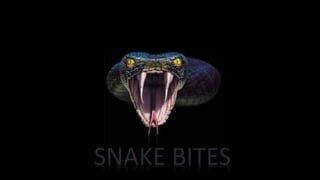
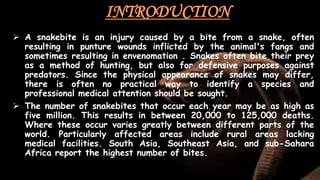
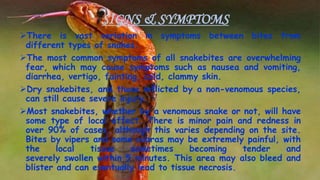

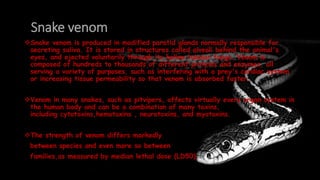

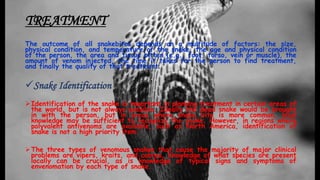

![Antivenom
Until the advent of antivenom, bites from some species of snake were almost
universally fatal. Despite huge advances in emergency therapy, antivenom is
often still the only effective treatment for envenomation. The first antivenom
was developed in 1895 by French physician Albert Calmette for the treatment
of Indian cobra bites. Antivenom is made by injecting a small amount of venom
into an animal (usually a horse or sheep) to initiate an immune system response.
The resulting antibodies are then harvested from the animal's blood.
Antivenom is injected into the person intravenously, and works by binding to and
neutralizing venom enzymes. It cannot undo damage already caused by venom, so
antivenom treatment should be sought as soon as possible. Modern antivenoms
are usually polyvalent, making them effective against the venom of numerous
snake species. Pharmaceutical companies which produce antivenom target their
products against the species native to a particular area. Although some people
may develop serious adverse reactions to antivenom, such as anaphylaxis, in
emergency situations this is usually treatable and hence the benefit outweighs
the potential consequences of not using antivenom.
Giving adrenaline (epinephrine) to prevent adverse effect to antivenom before
they occur might be reasonable where they occur commonly.Antihistamines do
not appear to provide any benefit in preventing adverse reactions.[37]](https://image.slidesharecdn.com/snakebite-160506182730/85/Snake-bite-9-320.jpg)
